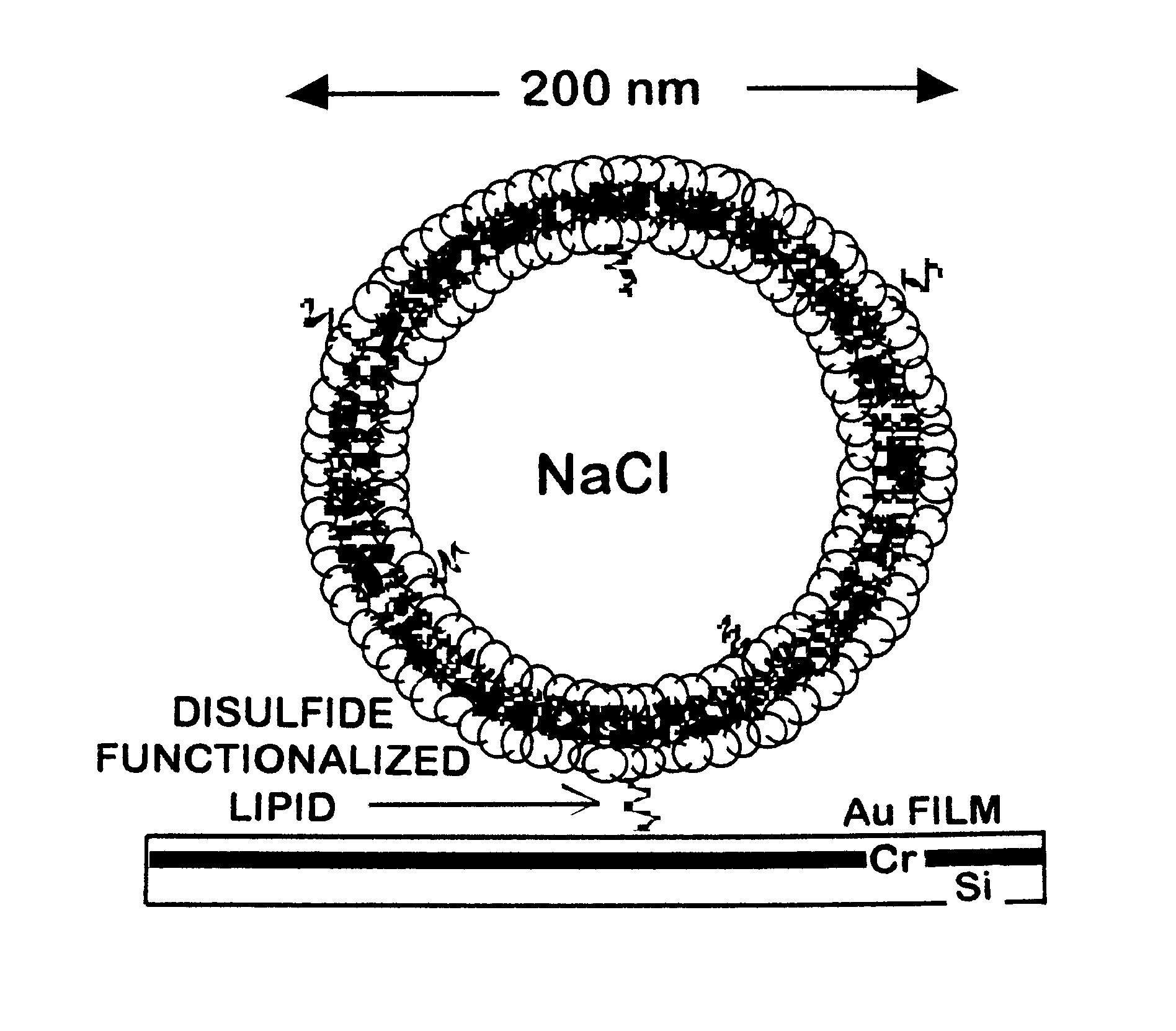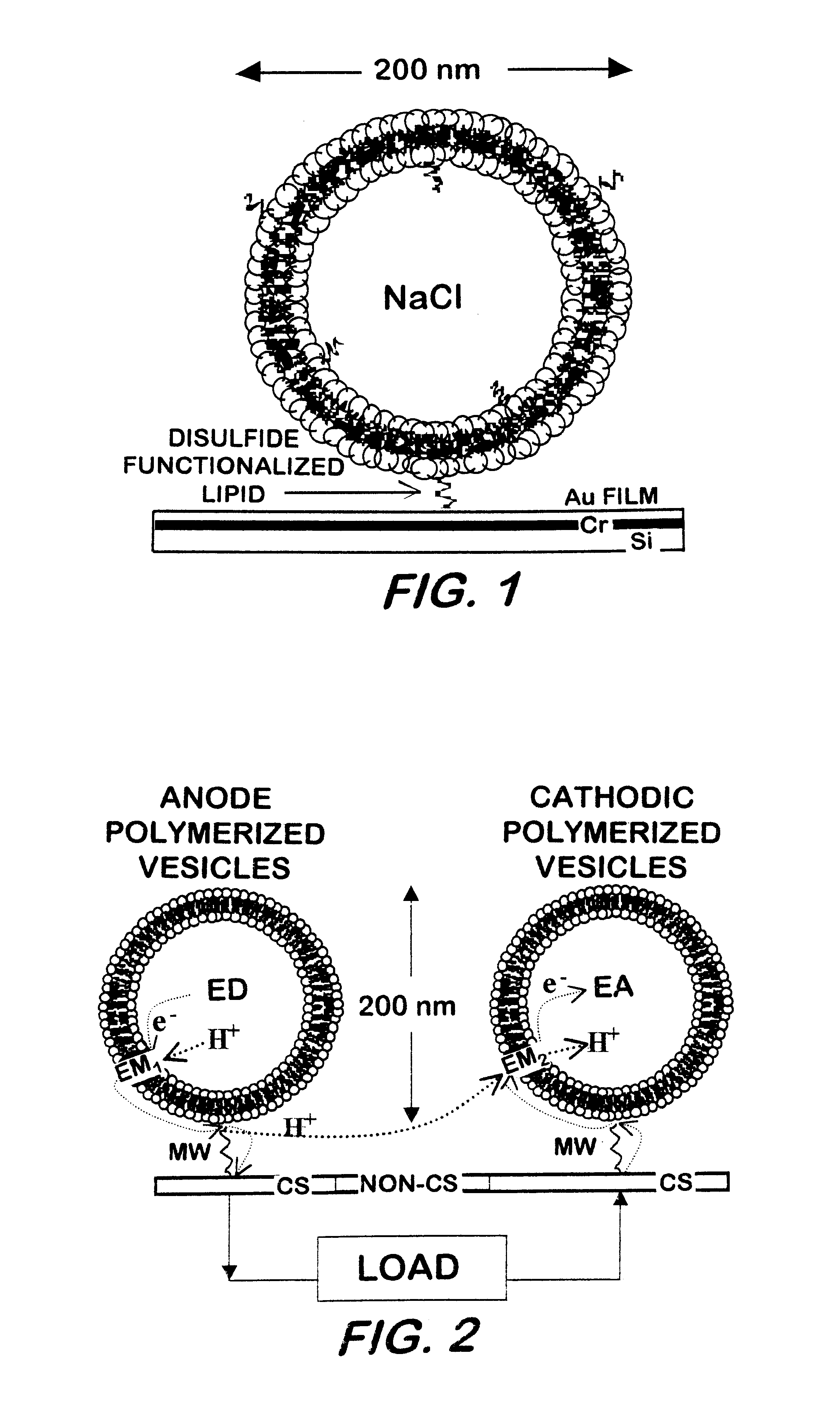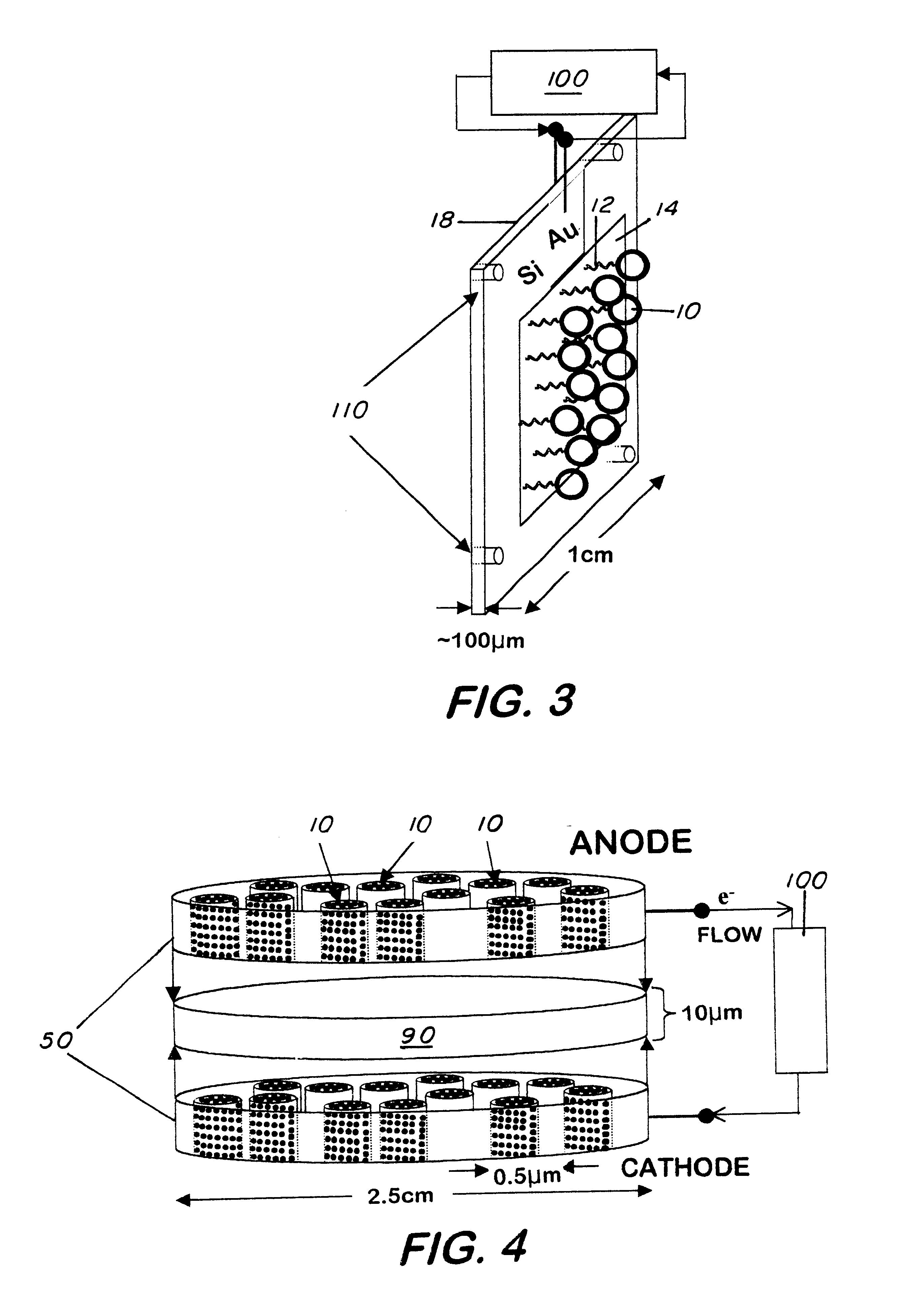Bio-based microbattery and methods for fabrication of same
a bio-based microbattery and micro-battery technology, applied in the field of micro-battery, can solve the problems of low energy density, low discharge rate, toxicity, flammability, etc., and achieve the effect of avoiding the use of hazardous and toxic materials
- Summary
- Abstract
- Description
- Claims
- Application Information
AI Technical Summary
Benefits of technology
Problems solved by technology
Method used
Image
Examples
example 1a
Vesicle Formation
25 mg of 1,2-bis(tricosa-10,12-diynoyl)-sn-3-glycerophosphocholine (DC.sub.8,9 PC) is placed in a scintillation vial and dispersed with 5 mL of deionized water. The sample is vortexed for 1 minute, heated to 50.degree. C. for 2 hours, and subsequently extruded 10 times through 0.2 .mu.m Nucleopore membranes using a Lipex extruder (Lipex Biomembranes Inc., Vancouver BC). The sample was UV-irradiated for 10 minutes at 8.degree. C. using a Rayonett Photochemical reactor (So. New England Ultraviolet Co., Hamden, Conn.). Polymerized vesicle average size (.about.200 nm), shape (spherical), and lamellarity (uni-) were determined by dynamic laser light scattering using a Coulter Model N4MD (Coulter Electronic, In., Miami, Fla.) and / or by a Zeiss transmission electron microscopy (TEM) or by a 8100 Hitachi high resolution TEM.
example 1b
25 mg of 1-palmitoyl-2-(tricosa-10,12-diynoyl)-sn-glycero-3-phosphocholine (PC.sub.8,9 PC) is placed in a scintillation vial and dispersed with 5 mL of deionized water. The sample is vortexed for 1 minute, heated to 50.degree. C. for 2 hours and subsequently extruded 10 times through 0.2 .mu.m Nucleopore membranes using a Lipex extruder (Lipex Biomembranes Inc., Vancouver BC). The sample was UV-irradiated for 10 minutes at 8.degree. C. using a Rayonett Photochemical reactor (So. New England Ultraviolet Co., Hamden, Conn.). Polymerized vesicle average size (.about.200 nm), shape (spherical), and lamellarity (uni-) were determined by dynamic laser light scattering using a Coulter Model N4MD (Coulter Electronic, In., Miami, Fla.) and / or by a Zeiss transmission electron microscopy (TEM) or by a 8100 Hitachi high resolution TEM.
example 1c
25 mg of 1,2-bis(trideca-12-ynoyl)-sn-glycero-3-phosphocholine (DC.sub.10 PC) is placed in a scintillation vial and dispersed with 5 mL of deuterated water. The sample is vortexed for 1 minute, heated to 50.degree. C. for 2 hours, and subsequently extruded 10 times through 0.2 .mu.m Nucleopore membranes using a Lipex extruder (Lipex Biomembranes Inc., Vancouver BC). The sample was exposed to 10 megaradians of .gamma.-radiation using a .sup.60 Co source. Polymerized vesicle average size (.about.130 nm), shape (spherical), and lamellarity (uni-) were determined by dynamic laser light scattering using a Coulter Model N4MD (Coulter Electronic, In., Miami, Fla.) and / or by a Zeiss transmission electron microscopy (TEM) or by a 8100 Hitachi high resolution TEM.
PUM
| Property | Measurement | Unit |
|---|---|---|
| thickness | aaaaa | aaaaa |
| depth height | aaaaa | aaaaa |
| surface roughness | aaaaa | aaaaa |
Abstract
Description
Claims
Application Information
 Login to View More
Login to View More - R&D
- Intellectual Property
- Life Sciences
- Materials
- Tech Scout
- Unparalleled Data Quality
- Higher Quality Content
- 60% Fewer Hallucinations
Browse by: Latest US Patents, China's latest patents, Technical Efficacy Thesaurus, Application Domain, Technology Topic, Popular Technical Reports.
© 2025 PatSnap. All rights reserved.Legal|Privacy policy|Modern Slavery Act Transparency Statement|Sitemap|About US| Contact US: help@patsnap.com



